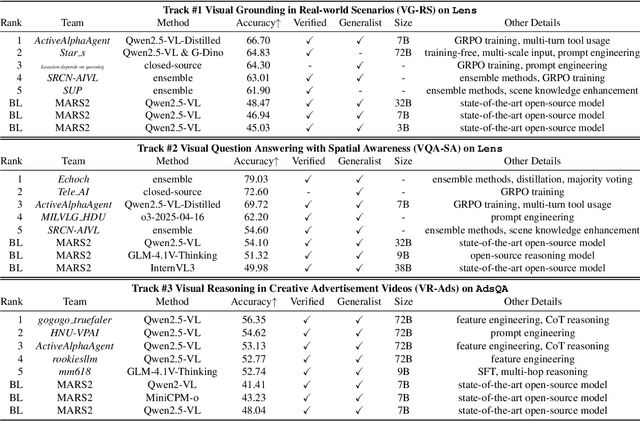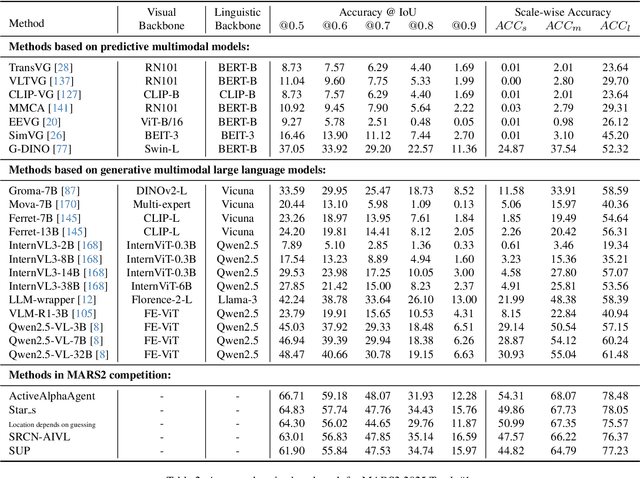Zhiyong Feng
School of Computer Science, Tianjin University
Integrated Sensing and Communication: Towards Multifunctional Perceptive Network
Oct 16, 2025Abstract:The capacity-maximization design philosophy has driven the growth of wireless networks for decades. However, with the slowdown in recent data traffic demand, the mobile industry can no longer rely solely on communication services to sustain development. In response, Integrated Sensing and Communications (ISAC) has emerged as a transformative solution, embedding sensing capabilities into communication networks to enable multifunctional wireless systems. This paradigm shift expands the role of networks from sole data transmission to versatile platforms supporting diverse applications. In this review, we provide a bird's-eye view of ISAC for new researchers, highlighting key challenges, opportunities, and application scenarios to guide future exploration in this field.
One Prompt Fits All: Universal Graph Adaptation for Pretrained Models
Sep 26, 2025Abstract:Graph Prompt Learning (GPL) has emerged as a promising paradigm that bridges graph pretraining models and downstream scenarios, mitigating label dependency and the misalignment between upstream pretraining and downstream tasks. Although existing GPL studies explore various prompt strategies, their effectiveness and underlying principles remain unclear. We identify two critical limitations: (1) Lack of consensus on underlying mechanisms: Despite current GPLs have advanced the field, there is no consensus on how prompts interact with pretrained models, as different strategies intervene at varying spaces within the model, i.e., input-level, layer-wise, and representation-level prompts. (2) Limited scenario adaptability: Most methods fail to generalize across diverse downstream scenarios, especially under data distribution shifts (e.g., homophilic-to-heterophilic graphs). To address these issues, we theoretically analyze existing GPL approaches and reveal that representation-level prompts essentially function as fine-tuning a simple downstream classifier, proposing that graph prompt learning should focus on unleashing the capability of pretrained models, and the classifier adapts to downstream scenarios. Based on our findings, we propose UniPrompt, a novel GPL method that adapts any pretrained models, unleashing the capability of pretrained models while preserving the structure of the input graph. Extensive experiments demonstrate that our method can effectively integrate with various pretrained models and achieve strong performance across in-domain and cross-domain scenarios.
MARS2 2025 Challenge on Multimodal Reasoning: Datasets, Methods, Results, Discussion, and Outlook
Sep 17, 2025



Abstract:This paper reviews the MARS2 2025 Challenge on Multimodal Reasoning. We aim to bring together different approaches in multimodal machine learning and LLMs via a large benchmark. We hope it better allows researchers to follow the state-of-the-art in this very dynamic area. Meanwhile, a growing number of testbeds have boosted the evolution of general-purpose large language models. Thus, this year's MARS2 focuses on real-world and specialized scenarios to broaden the multimodal reasoning applications of MLLMs. Our organizing team released two tailored datasets Lens and AdsQA as test sets, which support general reasoning in 12 daily scenarios and domain-specific reasoning in advertisement videos, respectively. We evaluated 40+ baselines that include both generalist MLLMs and task-specific models, and opened up three competition tracks, i.e., Visual Grounding in Real-world Scenarios (VG-RS), Visual Question Answering with Spatial Awareness (VQA-SA), and Visual Reasoning in Creative Advertisement Videos (VR-Ads). Finally, 76 teams from the renowned academic and industrial institutions have registered and 40+ valid submissions (out of 1200+) have been included in our ranking lists. Our datasets, code sets (40+ baselines and 15+ participants' methods), and rankings are publicly available on the MARS2 workshop website and our GitHub organization page https://github.com/mars2workshop/, where our updates and announcements of upcoming events will be continuously provided.
CSRD2025: A Large-Scale Synthetic Radio Dataset for Spectrum Sensing in Wireless Communications
Aug 27, 2025Abstract:The development of Large AI Models (LAMs) for wireless communications, particularly for complex tasks like spectrum sensing, is critically dependent on the availability of vast, diverse, and realistic datasets. Addressing this need, this paper introduces the ChangShuoRadioData (CSRD) framework, an open-source, modular simulation platform designed for generating large-scale synthetic radio frequency (RF) data. CSRD simulates the end-to-end transmission and reception process, incorporating an extensive range of modulation schemes (100 types, including analog, digital, OFDM, and OTFS), configurable channel models featuring both statistical fading and site-specific ray tracing using OpenStreetMap data, and detailed modeling of realistic RF front-end impairments for various antenna configurations (SISO/MISO/MIMO). Using this framework, we characterize CSRD2025, a substantial dataset benchmark comprising over 25,000,000 frames (approx. 200TB), which is approximately 10,000 times larger than the widely used RML2018 dataset. CSRD2025 offers unprecedented signal diversity and complexity, specifically engineered to bridge the Sim2Real gap. Furthermore, we provide processing pipelines to convert IQ data into spectrograms annotated in COCO format, facilitating object detection approaches for time-frequency signal analysis. The dataset specification includes standardized 8:1:1 training, validation, and test splits (via frame indices) to ensure reproducible research. The CSRD framework is released at https://github.com/Singingkettle/ChangShuoRadioData to accelerate the advancement of AI-driven spectrum sensing and management.
Coherent Compensation-Based Sensing for Long-Range Targets in Integrated Sensing and Communication System
Aug 17, 2025Abstract:Integrated sensing and communication (ISAC) is a promising candidate technology for 6G due to its improvement in spectral efficiency and energy efficiency. Orthogonal frequency division multiplexing (OFDM) signal is a mainstream candidate ISAC waveform. However, there are inter-symbol interference (ISI) and inter-carrier interference (ICI) when the round-trip delay exceeds the cyclic prefix (CP) duration for OFDM signals, which limits the maximum sensing range of ISAC system. When detecting a long-range target, the wide beam inevitably covers the close-range target, of which the echo's power is much larger than that of the long-range target. In order to tackle the above problem, a multiple signal classification (MUSIC) and least squares (LS)-based spatial signal separation method is proposed to separate the echo signals reflected from different targets. Moreover, a coherent compensation-based sensing signal processing method at the receiver is proposed to enhance the signal to interference plus noise power ratio (SINR) of the OFDM block for generating the range-Doppler map (RDM) with higher SINR. Simulation results reveal that the proposed method greatly enhances the SINR of RDM by 10 dB for a target at 500 m compared with two-dimensional fast Fourier transform (2D-FFT) method. Besides, the detection probability is also significantly improved compared to the benchmarking method.
* 15 pages, 10 figures
Subspace Fitting Approach for Wideband Near-Field Localization
Aug 06, 2025Abstract:Two subspace fitting approaches are proposed for wideband near-field localization. Unlike in conventional far-field systems, where distance and angle can be estimated separately, spherical wave propagation in near-field systems couples these parameters. We therefore derive a frequency-domain near-field signal model for multi-target wideband systems and develop a subspace fitting-based MUSIC method that jointly estimates distance and angle. To reduce complexity, a Fresnel approximation MUSIC algorithm is further introduced to decouple the distance and angle parameters. Numerical results verify the effectiveness of both proposed approaches.
Efficient Federated Learning with Encrypted Data Sharing for Data-Heterogeneous Edge Devices
Jun 25, 2025Abstract:As privacy protection gains increasing importance, more models are being trained on edge devices and subsequently merged into the central server through Federated Learning (FL). However, current research overlooks the impact of network topology, physical distance, and data heterogeneity on edge devices, leading to issues such as increased latency and degraded model performance. To address these issues, we propose a new federated learning scheme on edge devices that called Federated Learning with Encrypted Data Sharing(FedEDS). FedEDS uses the client model and the model's stochastic layer to train the data encryptor. The data encryptor generates encrypted data and shares it with other clients. The client uses the corresponding client's stochastic layer and encrypted data to train and adjust the local model. FedEDS uses the client's local private data and encrypted shared data from other clients to train the model. This approach accelerates the convergence speed of federated learning training and mitigates the negative impact of data heterogeneity, making it suitable for application services deployed on edge devices requiring rapid convergence. Experiments results show the efficacy of FedEDS in promoting model performance.
Multipath Component-Enhanced Signal Processing for Integrated Sensing and Communication Systems
Jun 09, 2025Abstract:Integrated sensing and communication (ISAC) has gained traction in academia and industry. Recently, multipath components (MPCs), as a type of spatial resource, have the potential to improve the sensing performance in ISAC systems, especially in richly scattering environments. In this paper, we propose to leverage MPC and Khatri-Rao space-time (KRST) code within a single ISAC system to realize high-accuracy sensing for multiple dynamic targets and multi-user communication. Specifically, we propose a novel MPC-enhanced sensing processing scheme with symbol-level fusion, referred to as the "SL-MPS" scheme, to achieve high-accuracy localization of multiple dynamic targets and empower the single ISAC system with a new capability of absolute velocity estimation for multiple targets with a single sensing attempt. Furthermore, the KRST code is applied to flexibly balance communication and sensing performance in richly scattering environments. To evaluate the contribution of MPCs, the closed-form Cram\'er-Rao lower bounds (CRLBs) of location and absolute velocity estimation are derived. Simulation results illustrate that the proposed SL-MPS scheme is more robust and accurate in localization and absolute velocity estimation compared with the existing state-of-the-art schemes.
Near-Field Motion Parameter Estimation: A Variational Bayesian Approach
Feb 22, 2025Abstract:A near-field motion parameter estimation method is proposed. In contract to far-field sensing systems, the near-field sensing system leverages spherical-wave characteristics to enable full-vector location and velocity estimation. Despite promising advantages, the near-field sensing system faces a significant challenge, where location and velocity parameters are intricately coupled within the signal. To address this challenge, a novel subarray-based variational message passing (VMP) method is proposed for near-field joint location and velocity estimation. First, a factor graph representation is introduced, employing subarray-level directional and Doppler parameters as intermediate variables to decouple the complex location-velocity dependencies. Based on this, the variational Bayesian inference is employed to obtain closed-form posterior distributions of subarray-level parameters. Subsequently, the message passing technique is employed, enabling tractable computation of location and velocity marginal distributions. Two implementation strategies are proposed: 1) System-level fusion that aggregates all subarray posteriors for centralized estimation, or 2) Subarray-level fusion where locally processed estimates from subarrays are fused through Guassian product rule. Cram\'er-Rao bounds for location and velocity estimation are derived, providing theoretical performance limits. Numerical results demonstrate that the proposed VMP method outperforms existing approaches while achieving a magnitude lower complexity. Specifically, the proposed VMP method achieves centimeter-level location accuracy and sub-m/s velocity accuracy. It also demonstrates robust performance for high-mobility targets, making the proposed VMP method suitable for real-time near-field sensing and communication applications.
Gradient Co-occurrence Analysis for Detecting Unsafe Prompts in Large Language Models
Feb 18, 2025



Abstract:Unsafe prompts pose significant safety risks to large language models (LLMs). Existing methods for detecting unsafe prompts rely on data-driven fine-tuning to train guardrail models, necessitating significant data and computational resources. In contrast, recent few-shot gradient-based methods emerge, requiring only few safe and unsafe reference prompts. A gradient-based approach identifies unsafe prompts by analyzing consistent patterns of the gradients of safety-critical parameters in LLMs. Although effective, its restriction to directional similarity (cosine similarity) introduces ``directional bias'', limiting its capability to identify unsafe prompts. To overcome this limitation, we introduce GradCoo, a novel gradient co-occurrence analysis method that expands the scope of safety-critical parameter identification to include unsigned gradient similarity, thereby reducing the impact of ``directional bias'' and enhancing the accuracy of unsafe prompt detection. Comprehensive experiments on the widely-used benchmark datasets ToxicChat and XStest demonstrate that our proposed method can achieve state-of-the-art (SOTA) performance compared to existing methods. Moreover, we confirm the generalizability of GradCoo in detecting unsafe prompts across a range of LLM base models with various sizes and origins.
 Add to Chrome
Add to Chrome Add to Firefox
Add to Firefox Add to Edge
Add to Edge